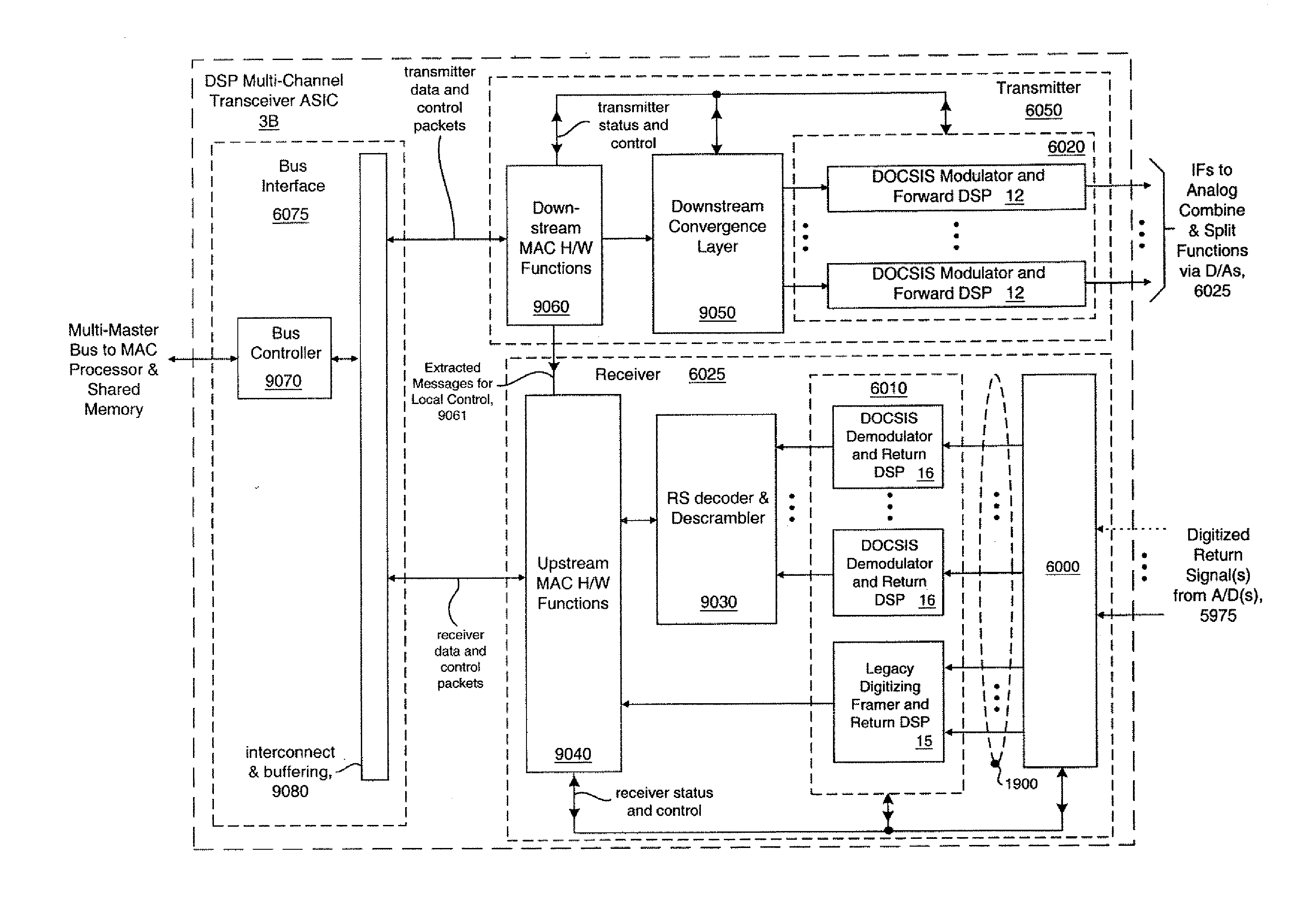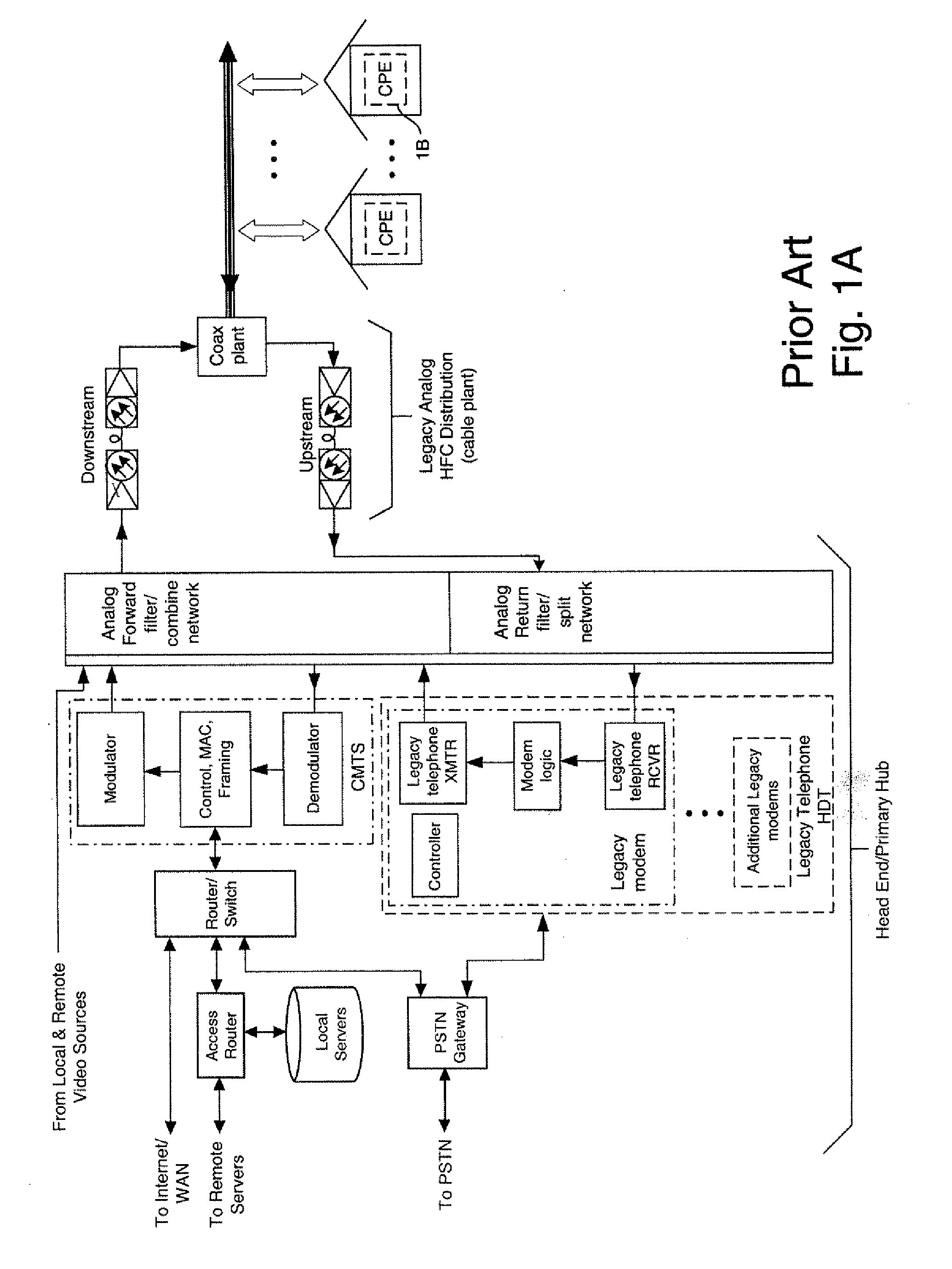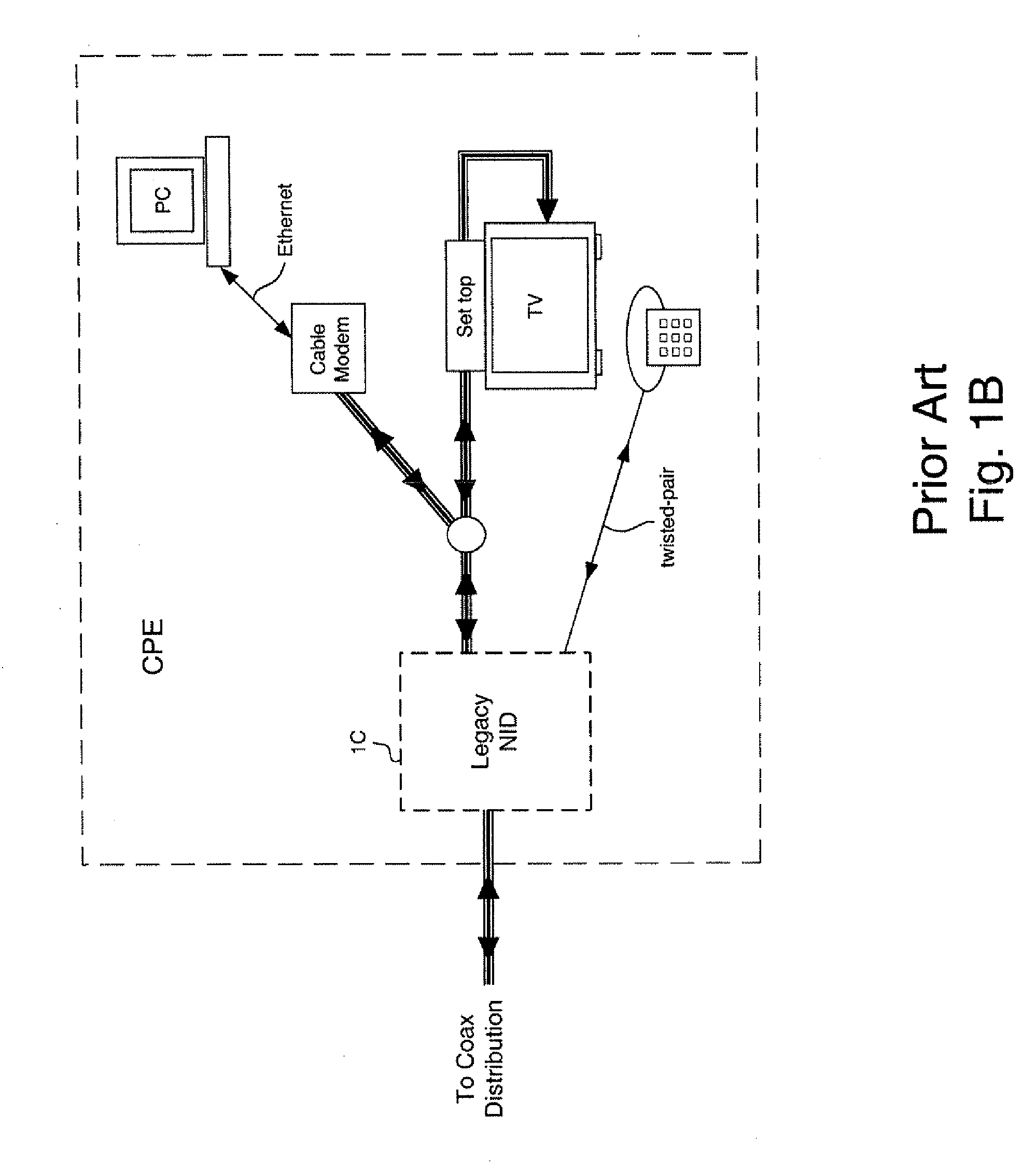Enhanced fiber nodes with cmts capability
- Summary
- Abstract
- Description
- Claims
- Application Information
AI Technical Summary
Benefits of technology
Problems solved by technology
Method used
Image
Examples
Embodiment Construction
System Overview
[0046]FIGS. 3A through 3D illustrate what the applicant refers to as an eFN (Enhanced FN), in accordance with the present invention. The eFN is a Fiber Node or mini Fiber Node (mFN) that includes a “mini-CMTS.” As the term is used herein, a mini-CMTS is an enhanced CMTS that is characterized by high functional density, a compact form factor, low power consumption, and integral support for the merging of analog and digital channels for transmission over digital packet networks. The mini-CMTS of the present invention provides a highly compact and cost-effective implementation, including a substantial reduction in the number of bulky connectors required. Additional illustrative detail of various aspects of the eFN and its CMTS is available in the following applications (previously incorporated by reference, above): “ENHANCED CMTS FOR RELIABILITY, AVAILABILITY, AND SERVICEABILITY,”“TRANSCEIVER CHANNEL BANK WITH REDUCED CONNECTOR DENSITY,” and “MULTIPLE INPUT, MULTIPLE O...
PUM
 Login to View More
Login to View More Abstract
Description
Claims
Application Information
 Login to View More
Login to View More - R&D
- Intellectual Property
- Life Sciences
- Materials
- Tech Scout
- Unparalleled Data Quality
- Higher Quality Content
- 60% Fewer Hallucinations
Browse by: Latest US Patents, China's latest patents, Technical Efficacy Thesaurus, Application Domain, Technology Topic, Popular Technical Reports.
© 2025 PatSnap. All rights reserved.Legal|Privacy policy|Modern Slavery Act Transparency Statement|Sitemap|About US| Contact US: help@patsnap.com



